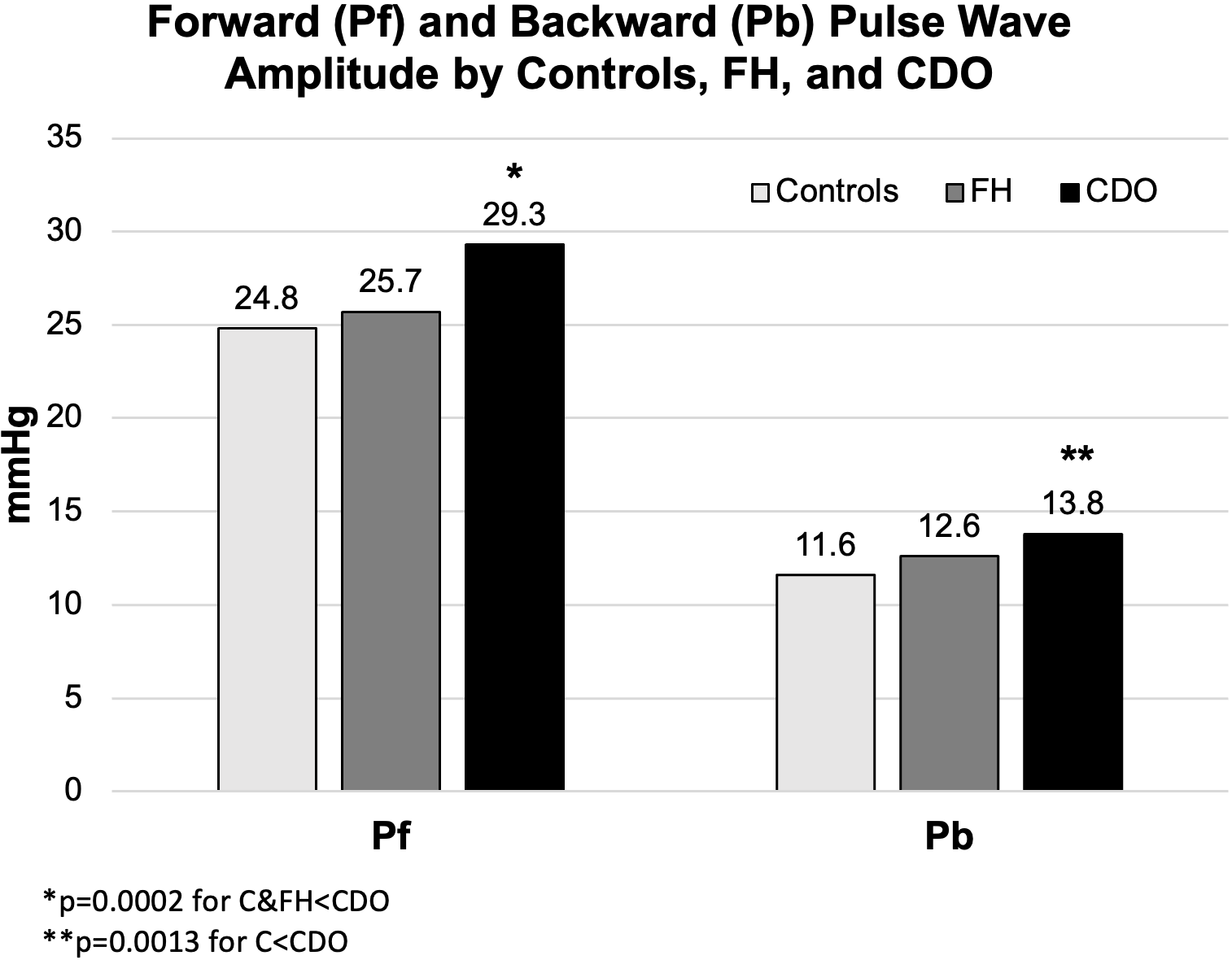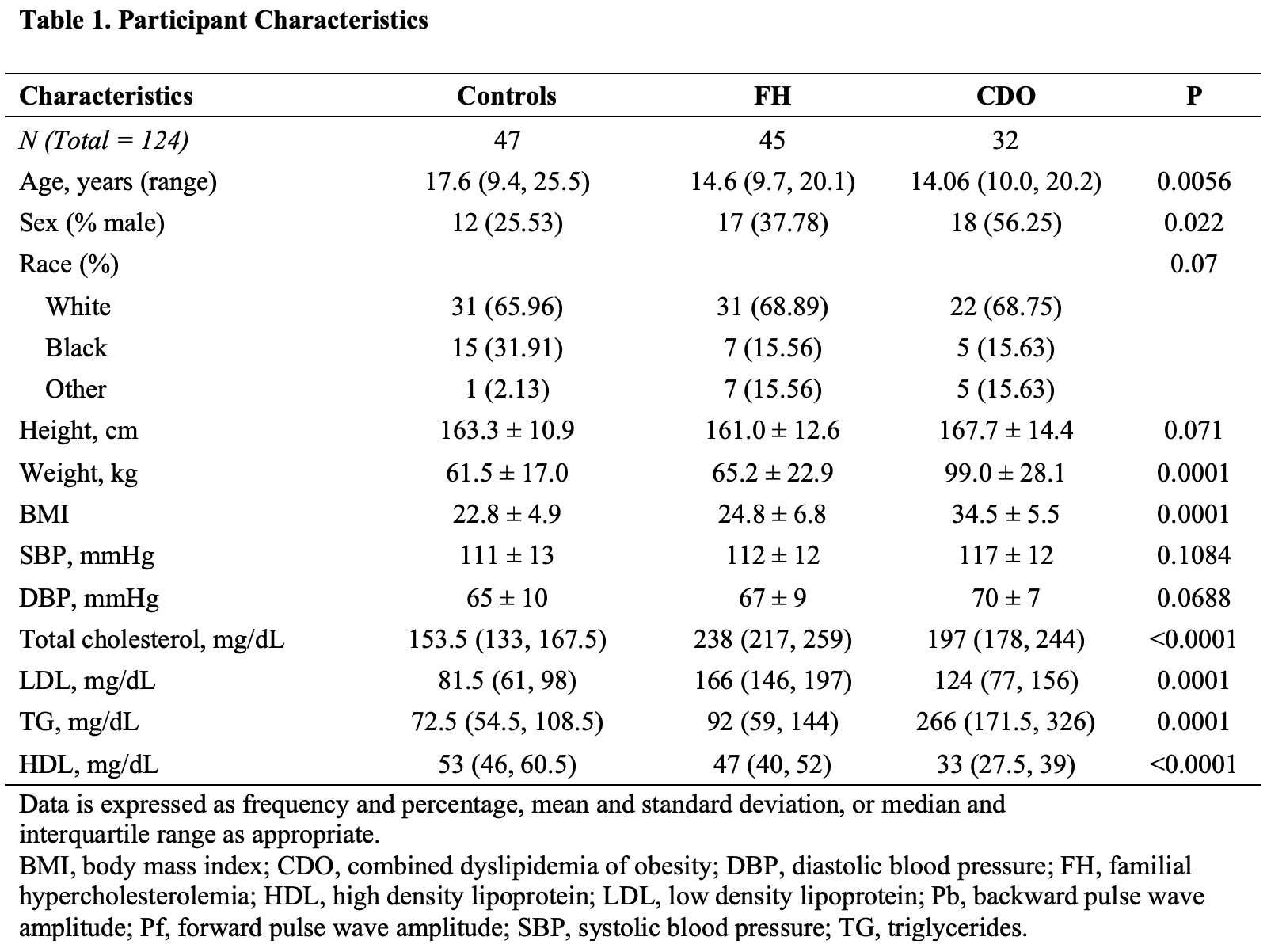Cardiology
Session: Cardiology 2
161 - Vascular Risk Assessment in Youth with Familial Hypercholesterolemia and Combined Dyslipidemia of Obesity
Monday, May 6, 2024
9:30 AM - 11:30 AM ET
Poster Number: 161
Publication Number: 161.3208
Publication Number: 161.3208
- AT
Andrew Tran, MD, MS (he/him/his)
Assistant Professor
Nationwide Children's Hospital
Columbus, Ohio, United States
Presenting Author(s)
Background: Pulse wave analysis (PWA) assesses vascular health by estimating arterial wave reflections noninvasively and is associated with cardiovascular (CV) events in adults in recent studies. However, data in youth are lacking. Individuals with CV risk factors such as familial hypercholesterolemia (FH) or combined dyslipidemia of obesity (CDO) have increased risk of adult-onset CV disease. Using PWA may help improve risk stratification of young patients with adverse CV risk factors and enhance disease management.
Objective: We hypothesized that youth with adverse CV risk factors would have differences in arterial wave reflections compared to controls.
Design/Methods: Demographic, anthropometric, and fasting lipid values were obtained in 124 patients aged 9-25 years in a study comparing vascular health among normolipidemic controls (N=47), FH (N=45), and CDO (N=32). PWA was obtained using the SphygmoCor XCEL device, and wave separation analyses were performed from brachial artery assessments. Group differences were assessed by chi-square, ANOVA, or Kruskal-Wallis test as appropriate by variable type and distribution normality.
Results: There were significant differences between groups in adiposity (CDO with higher BMI, p< 0.001, Table 1) and lipid levels with a more adverse lipid profile (higher TC, LDL, & TG; lower HDL) for the FH and CDO groups versus controls (all p< 0.001). The CDO group had higher forward pulse wave amplitude (Pf) versus the control and FH groups (p=0.0002, Figure) and higher backward pulse wave amplitude (Pb) versus controls (p=0.0013). Differences in Pf or Pb between FH and controls did not reach significance.
Conclusion(s): Adolescents and young adults with CDO have altered forward and backward wave reflections compared to normolipidemic controls. It is possible that PWA differences between the FH and control groups may become significant over time. These novel parameters suggest early vascular changes in youth with CDO and may help improve risk stratification in youth with adverse CV risk factors.


